A natural-looking transplanted hairline is a critical goal for individuals undergoing hair transplantation surgery. Several factors contribute to the success of achieving a natural appearance in a transplanted hairline:
- Hairline Design:
- The hairline design should be customised to suit the individual’s facial features, age, and gender. It should not appear too low or too high on the forehead.
- A gradual and irregular hairline with variations in hair density creates a more natural appearance. Natural hairlines are not perfectly straight.
- Hair Graft Placement:
- The angle at which the transplanted hair grafts are placed is crucial. Hair should emerge from the scalp at the same angle as the surrounding natural hair.
- The direction of hair growth is also essential. The transplanted hair should point outward and downward, mimicking the natural growth pattern.
- Hair Graft Density:
- The density of transplanted hair should match the surrounding natural hair. A very dense hairline can appear unnatural, and a lack of density may lead to an unnatural look.
- Hair Graft Selection:
- Using single-hair follicular units at the front of the hairline creates a soft, feathered look. Larger grafts with multiple hairs should be used further back in the scalp.
- Hair Graft Distribution:
- Gradually increasing the density of hair grafts from the front hairline to the mid-scalp helps create a natural transition.
- Hairline Zone:
- The frontal hairline should have finer, softer hair, while the area just behind it can have slightly coarser hair for a more natural appearance.
- Hair Texture and Curl:
- Matching the texture and curl of the transplanted hair to the existing natural hair is essential for a seamless blend.
- Avoiding a Perfectly Straight Line:
- Natural hairlines tend to be slightly irregular, with some variation in the placement and angles of individual hair follicles. Avoiding a perfectly straight hairline enhances the natural look.
- Age Consideration:
- The age of the patient should be taken into account. A mature hairline may have some recession, while a younger person’s hairline is generally lower.
- Patient’s Input:
- Effective communication between the patient and the surgeon is vital. Patients should provide their input and preferences during the hairline design process.
- Healing and Growth:
- Proper post-operative care and patience are crucial. It takes several months for transplanted hair to grow and mature, so the initial appearance may not reflect the final result.
- Surgeon’s Skill:
- The experience and skill of the surgeon performing the hair transplantation play a significant role in achieving a natural-looking hairline.
In summary, a natural-looking transplanted hairline requires careful planning, attention to detail, and a focus on individual characteristics. It’s essential for both the surgeon and the patient to collaborate closely to ensure the best possible outcome.











